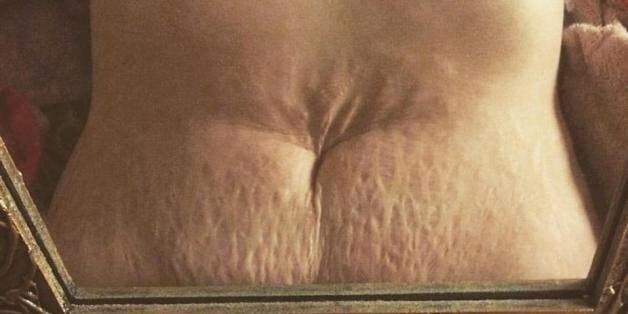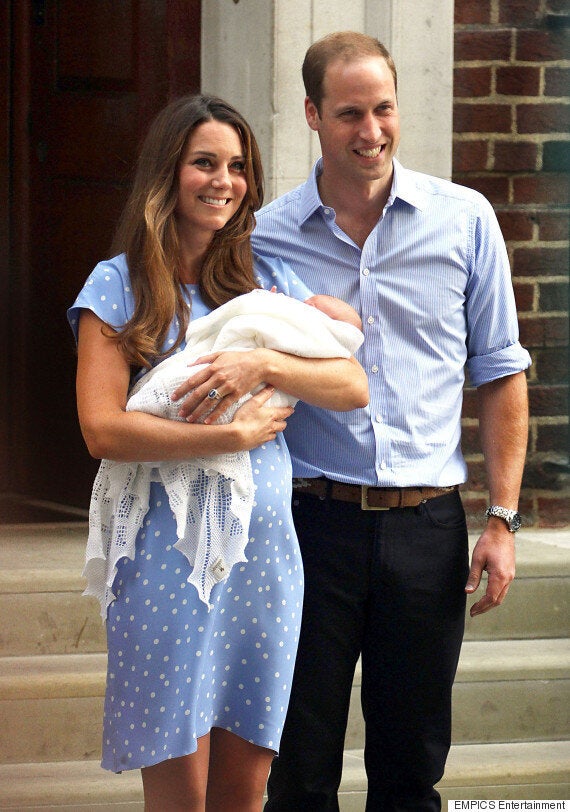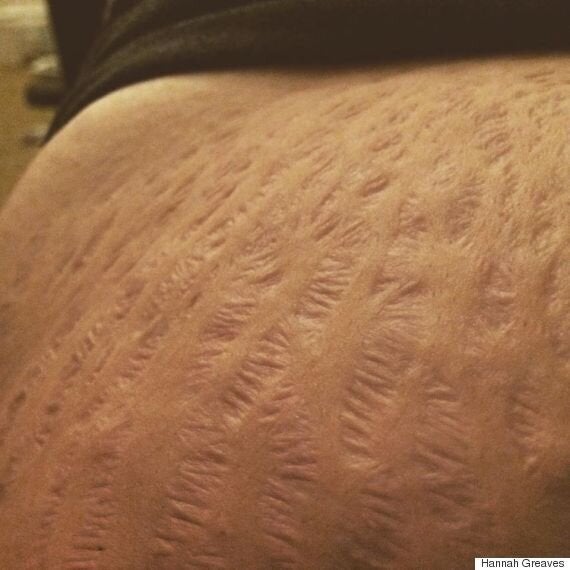

It's taken me about four years to come to terms with my changed body.
Four long years from the moment the stretch marks began appearing on my expanding belly. I no longer looked in the mirror and saw the body of a 17-year-old, the body I saw was alien to me. It didn't look like the bodies of the people I spent time with - my friends and fellow students. Their bodies did not swell and grow angry purple lines across their stomachs, thighs, breasts, backs and arms. Their bodies did not betray the rules of youthful elasticity. Their bodies certainly didn't have questionable pelvic floors that woke them three times a night. I ultimately wanted my body to be 'normal' - a 'normal' based on my peers and other women my age on TV or in magazines. I wanted to be given the opportunity to behave, look, and feel like all other people my age. My post-pregnancy body did not fit this ideal - while everyone around me drank and partied the only thing I could do was eat, which perhaps contributed to my expanding stomach.
So, for four long years these feelings of self-loathing have invaded my identity as a young adult and a mother. They have pervaded my sense of being to create a low self-worth. These feelings have not been helped by the distortion of the 'normal' postpartum body in the media.
I gave birth on the same day as the Duchess of Cambridge. The day after she appeared wearing a slim fitting dress that showed her soft postpartum belly. The papers devoured it - they asked how long it would take for her to get her slim figure back, what she would wear, and what was appropriate. When you're bump buddies with royalty, it's hard not to compare yourself to them. Even family and friends remarked how it would take me a little bit of time to "get back to normal". For such a long time I saw my body as a prison and the stretch marks as the bars on my cell. I was unwilling to see past them and I was not willing to leave their confines.

Over the years I have had so many people telling me how to feel about my body. I was never comforted when people said I should embrace my body because I had a wonderful child - I didn't understand why I should have to trade my body for my child, they were never mutually inclusive. In many ways, I am still the very same turbulent teenager, unable to accept the authority of others trying to tell me how to feel about my body because it simply doesn't work that way.
I know - it's all sounding rather sad and a little depressing, but that's how many women feel when they are faced with a body that does not look or feel like how they believe it should. But here comes the positive part! The body positive part... the big revelation. It takes time, maturity and distance to realise that there is no normal postpartum body.
Some women will and do bounce back, some by their body's own natural graced and others with activity, strength and determination. Other women may take longer, or (shock horror) never have a body that looks like it did before they fell pregnant, and the most important thing to realise is, this is okay. A body is a body - a vessel of you. It does not reflect your competency as a mother or your validity as a member of society. The flat stomachs we see on screen are as okay as the stomach you see on yourself - as a culture we just haven't come round to celebrating them yet.
There is no quick fix for body positivity - we are still bombarded with people telling us how to feel and what to wear. Much of the body positivity space too is fundamentally flawed, dominated by pictures of curvaceous white women, which is why I don't want to take up space when there are many women who look just like me. Body positivity needs to up its game and be far more inclusive.

Yet, body positivity has brought so much to me. For the first time I have learned to unlearn what I believe to be the ideal body. I have learned to trace my fingers over the valleys and ridges of my stomach. To revel in the textures of untouched and stretched skin. To marvel in each part's unique size, depth and shape. My stretch marks look like silver flames dancing across my flesh, or layers of silver birch trees on the edge of a forest. They stretch from above my belly button to below my pubis and further down my thighs. They shimmer and catch the light as I move, the wrinkles of stretched skin that inflate and deflate as my stomach shrinks and grows. They have become poetry and art, and I a living 3D sculpture, a canvas upon which the gods decided to paint.
Like all art, my body is open to interpretation and each person is entitled to their perception. For some, it is evidence that I carried a child - something which many envy. To others, my body depicts laziness, shame - it is something to be feared as it shows the ugly, unspoken, undocumented effects of pregnancy. But the reality is that I am my own harshest critic and that no one has spent as much time trying to find the flaws in something that is neither pretty nor ugly. Most importantly, it is mine to do with as I choose and it is up to me to decide whether I view it as a masterpiece or not.
http://theuniversitymum.org
HuffPost UK Parents is running a week-long focus on 'Mumbod' to empower mums and mums-to-be to feel confident about their bodies pre- and post-baby. We are launching a section on the site that focuses on all aspects of mums' bodies and highlights the amazing things they are capable of. We'd also love to hear your stories. To blog for Mumbod, email ukblogteam@huffingtonpost.com. To keep up to date with features, blogs and videos on the topic, follow the hashtag #MyMumbod.